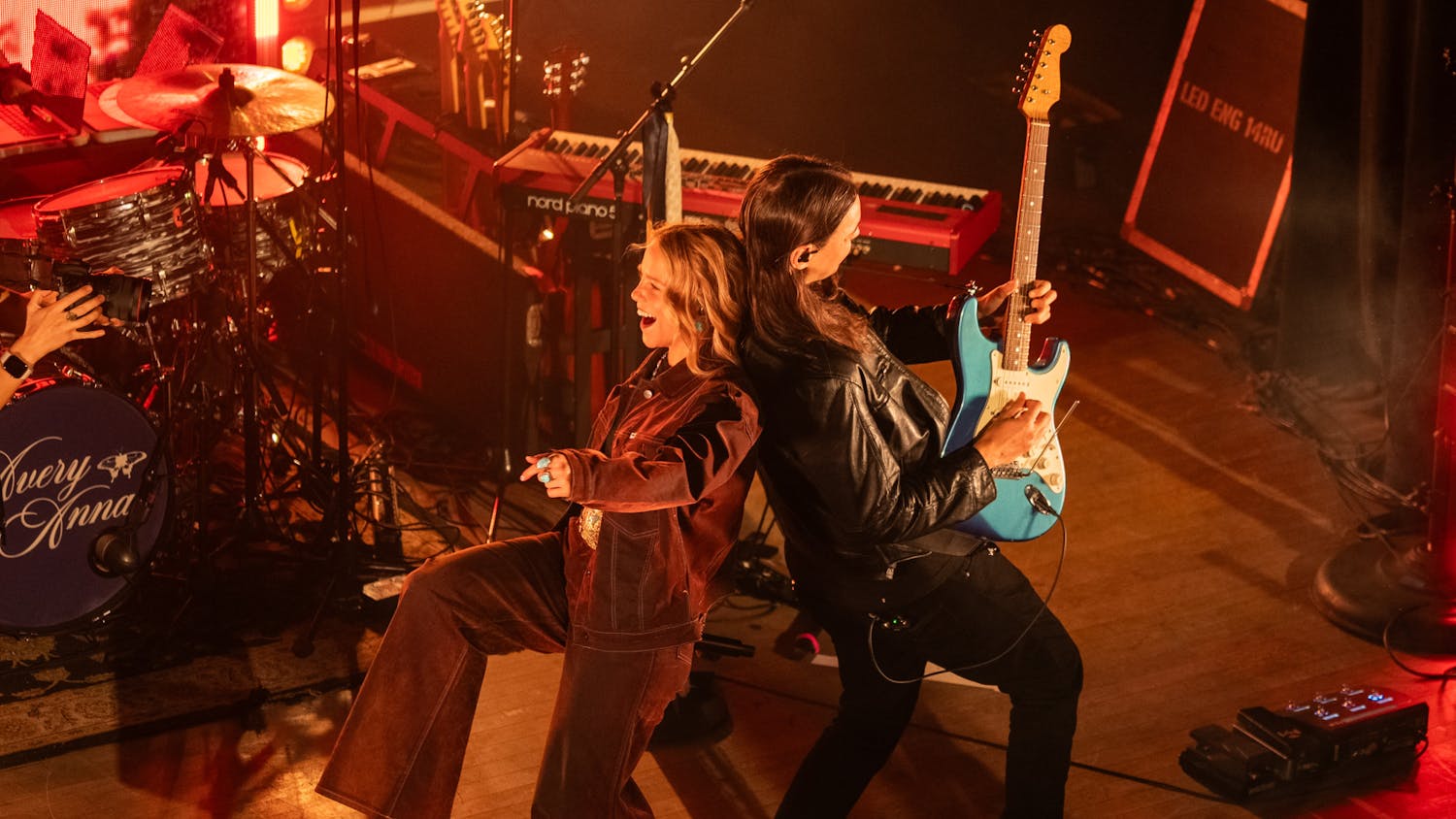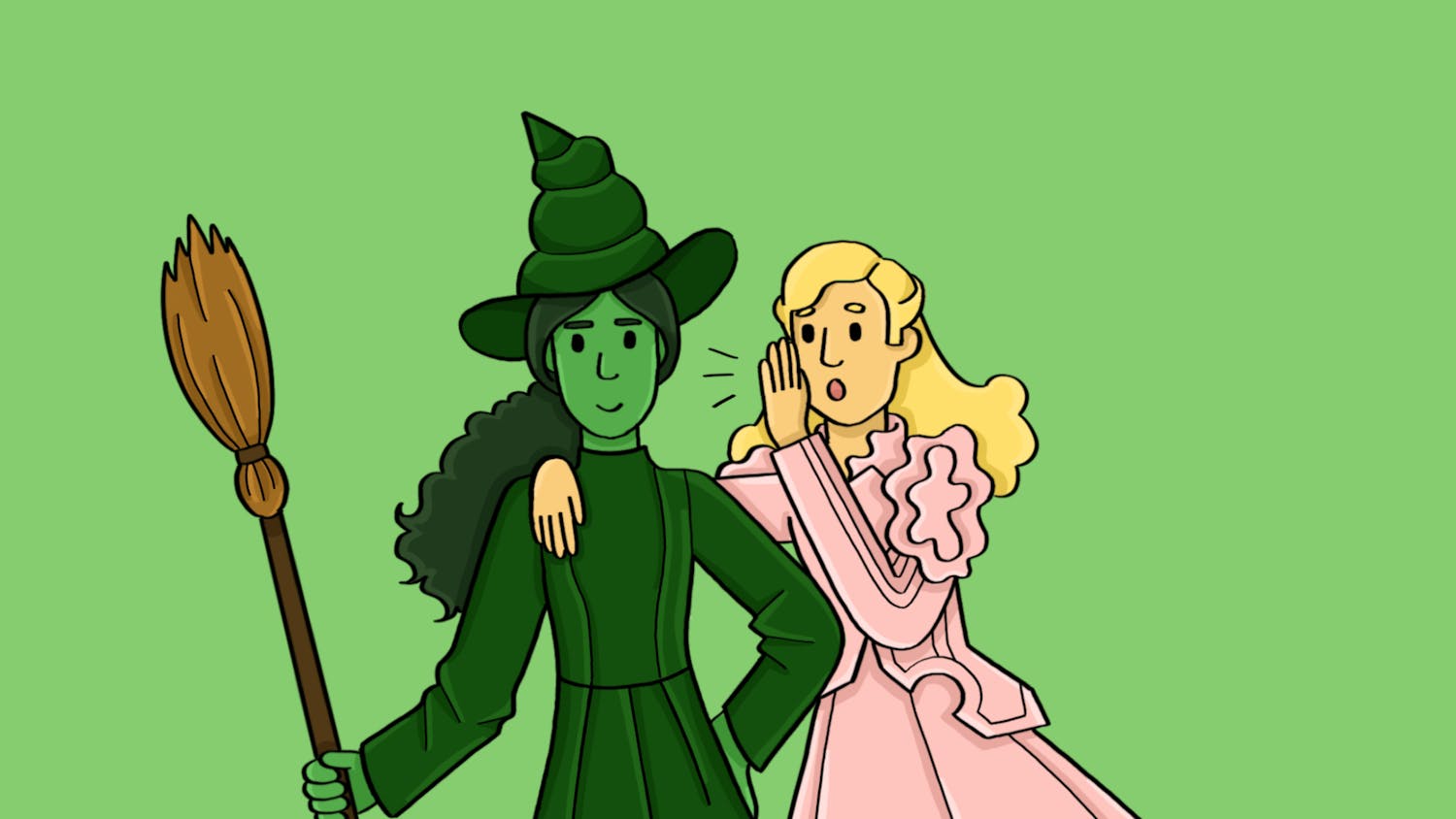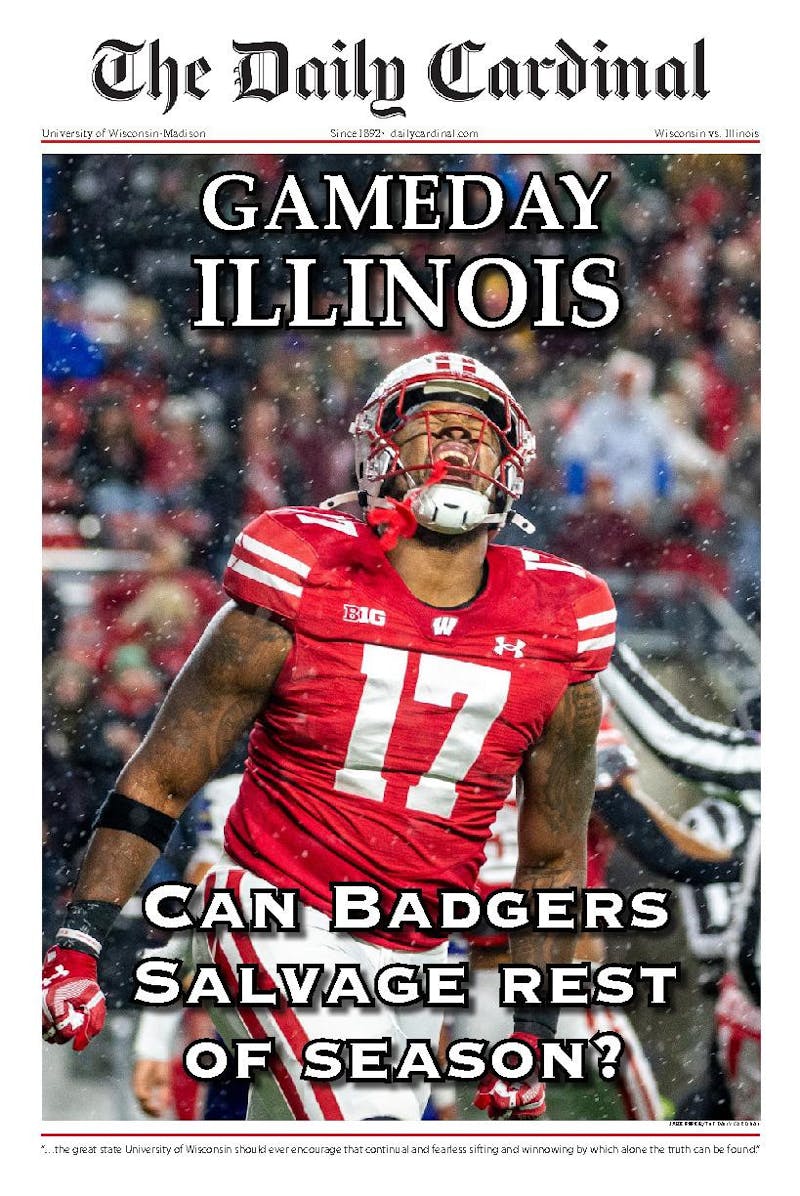The “Eat My Words” exhibition at Madison’s James Watrous Gallery, featured pieces created from discarded items by Liz Bachhuber and Jill Sebastian, examining recycling as a “mirror of natural processes” from Aug. 1 to Oct. 12.
The exhibition featured Bachhuber's work on one side and Sebastian's on the other. The two artists’ work met in the middle with their collaborative piece titled “Eat My Words.”
The titular installation represents the cyclical process of nature as worms in a worm composter create compost to feed four snow pea plants. The leftover leaves of the consumed snow peas are then turned into paper, utilized and composted again.
Bachhuber spoke to The Daily Cardinal about her environmentalist inspiration behind her artwork, one of two galleries on display for the exhibit. She said her work is important for conveying messages of not wasting resources.
Sebastian and Bachhuber became friends in art school in the 1970s and reconnected in 2019 after Sebastian visited Bachhuber in her hometown Weimar, Germany, where she had a retrospective at the ACC Galerie Weimar. Realizing their artistic trajectories had been in alignment for years, they began a transatlantic conversation that culminated in this collaborative piece.
The installation featured an aluminum structure meant to represent a domestic space “laden with [their] words,” according to the artwork’s label.
“...Transformation of collected matter, material, research and ideas from one form to another is a process akin to composting,” one segment of the structure read.
Bachhuber said the purpose behind these sentence fragments is to trigger something in the viewer. She’s trying to get people to make associations and complete the sentence in a conversation between artist and audience.
The name of the piece is both a reference to the worms eating Bachhuber’s and Sebastian’s correspondence and to the expression to “eat one’s words” — tying the cyclicality of nature to human conversation and connection.
Bachhuber said her primary interest is the idea of found objects.
“Not shiny new objects — they’ve had a life. I'm fascinated by what happens to things in their interaction with humans,” Bachhuber told The Daily Cardinal.
This fascination is evident in pieces like “Ice Birds,” featuring discarded refrigerator doors from the fall of the Berlin Wall. In “Snowflakes,” Bachhuber reuses surgical instruments from Tuttlingen, a city famous for these instruments and for its wintry landscapes, to create a set of stainless steel and brass snowflakes.
Another of her pieces, titled “Maelstrom,” depicts a layering of silk ties onto driftwood, meant to show how nature cannot evade industrial development.
Sebastian, like Bachhuber, utilizes natural and scavenged matter to create art and uncover the experiences that shape humanity’s course.
Her piece “The Limits of Paradise” utilizes an invasive species of sumac to construct a grid on which the wings of House Sparrows hang. Fliers dropped over war zones accompany the wings, showing how “Birds, weeds, and propaganda ignore borders,” according to the artwork’s label.
“Eat My Words” previously appeared at the Reimagining the Global Village Exhibition at the Milwaukee Institute of Art & Design in 2021. The artists are looking for other venues to show the installation together.






